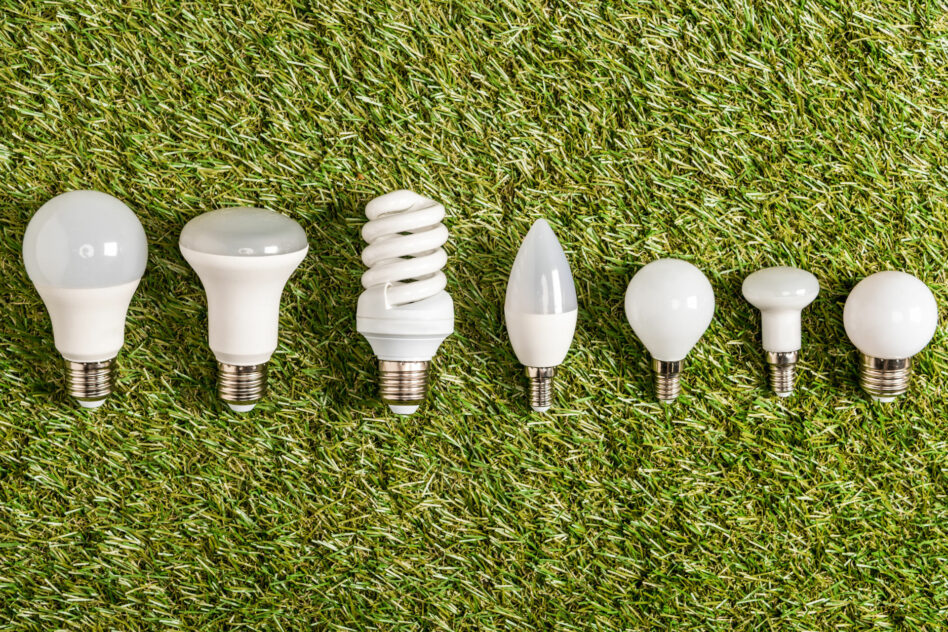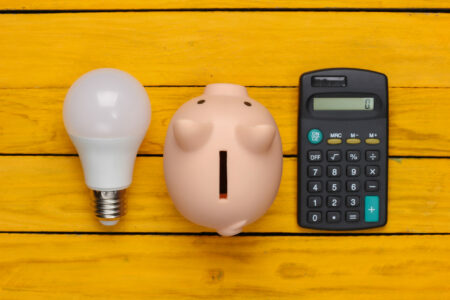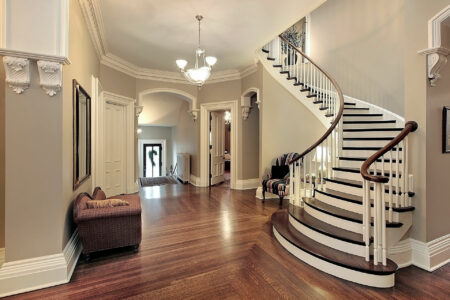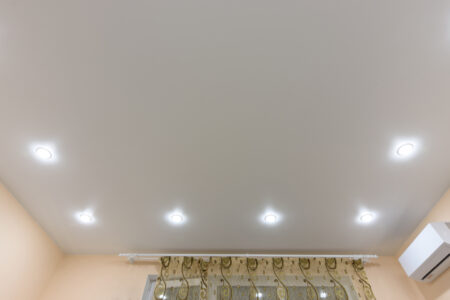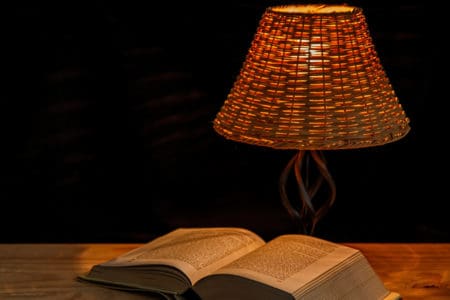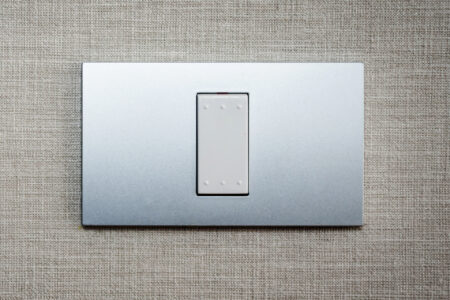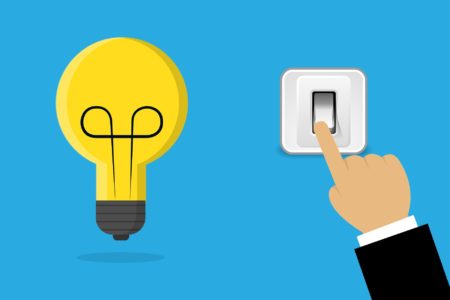Having the right lighting in your home can have a huge impact on the ambiance of your humble abode. Therefore, you may be asking yourself how to buy the right light bulb and what criteria are important when making your decision. Well, you’ve come to the right place!
The Type of Light Bulb
The first consideration to keep in mind when deciding how to light your home is the type of bulbs you’re going to use. The type of bulb you choose affects the energy consumption, the intensity of light, and the available colors.
Fortunately, there are many bulb types to choose from, and find what suits you best. Here are some of the most common light bulb types:
Incandescent
Let’s start with the original light bulb, the incandescent.
This is the bulb type that Edison invented in the late 19th century. It works through the heating effect that an electric current has on a tungsten filament, causing it to glow. Unfortunately, this mechanism is highly inefficient.
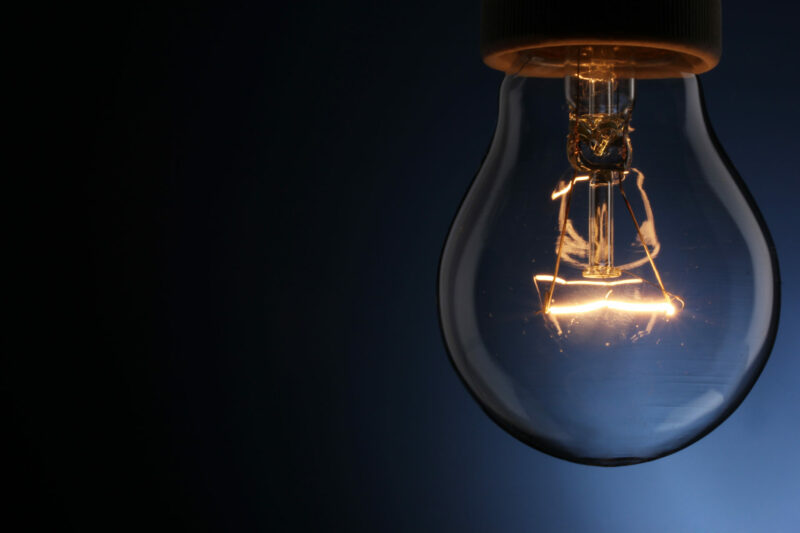
Only 5% of the energy consumed by incandescent bulbs results in light. The rest dissipates as wasted heat energy. In turn, incandescent light bulbs will significantly run up your monthly electric bill. Additionally, they don’t bode well for the environment.
The main advantage of incandescent light bulbs is that they’re very cheap. However, they don’t last very long. Therefore, they’re not cost-efficient in the long run.
LED
On the other side of the spectrum is the LED light bulb. These bulbs are undoubtedly the most energy-efficient lighting options on the market today. The mechanism of LEDs allows them to give off minimal heat and transform the bulk of the energy they consume into light.
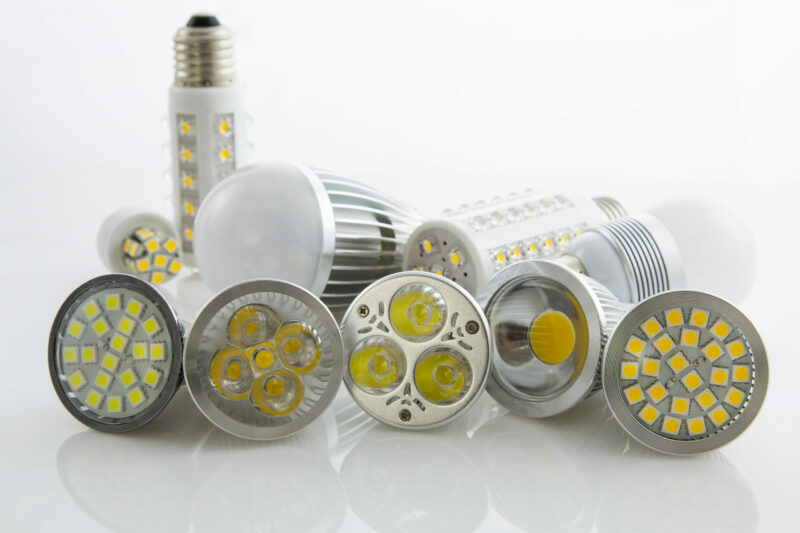
Additionally, LEDs will give you around 25,000 hours worth of lighting. This longevity negates the fact that they’re relatively expensive upfront. That’s because, with proper maintenance, you won’t have to worry about replacing them for up to 15 years.
LEDs can last this long due to the absence of a filament. Instead, these bulbs operate using durable light-emitting diodes made out of semiconductors.
Fluorescent
Although they may not be as efficient as LEDs, fluorescent light bulbs are still five times less energy-consuming than incandescents. Fluorescents have an average life span of 10,000 hours, making them a great option for your lighting needs.
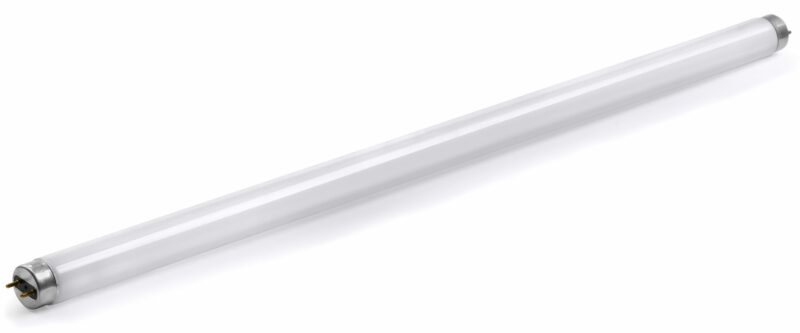
These bulbs contain mercury vapor, which is ionized when exposed to an electrical current. This process results in electromagnetic energy being produced. Finally, the bulb’s interior coating transforms this energy into visible light.
The main concern with fluorescent bulbs is that they contain mercury. Therefore, these bulbs should be disposed of correctly.
Xenon
If you’ve heard of xenon bulbs before, chances are it was in the context of car headlights. This is the most common use for this bulb type due to its powerful, high-intensity light. However, these bulbs can also be used for home use in certain situations.
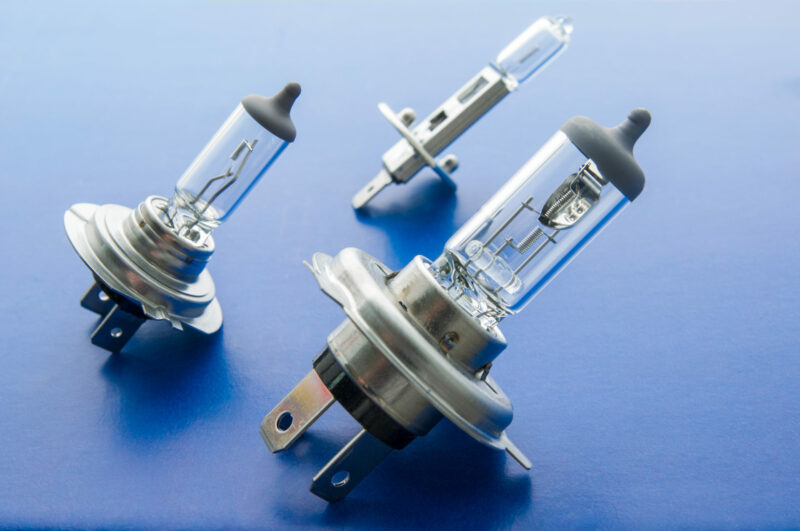
Thanks to their output of 3,000 lumens, xenon bulbs are excellent options for areas of your house where good visibility is a necessity. A good example of this is your kitchen. Additionally, these bulbs are a great choice for commercial use if you own a store or work as a dentist.
Furthermore, xenon lights are highly safe and efficient, giving off very little heat. You can expect to get 2,500 hours of powerful lighting out of your xenon bulbs before needing to replace them.
Halogen
Most people think of halogen lights as the next step in the evolution of incandescent bulbs. They operate using the same mechanism, the only difference being the presence of halogen gas.
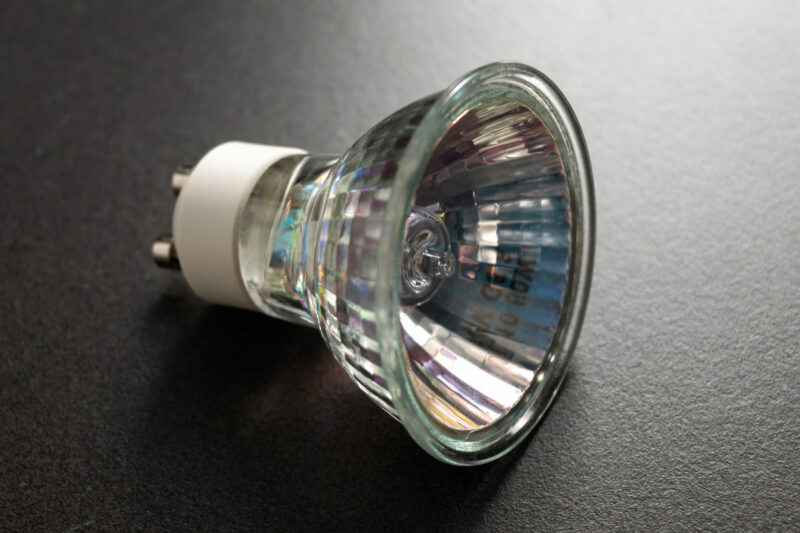
This gas helps make the bulb more efficient by allowing the hot gas produced by the burning filament to stay in contact with it for longer. This results in less energy being consumed and a brighter light being produced.
As a result of this, halogen bulbs have twice the useful life of regular incandescent bulbs. The primary concern with halogen bulbs is that they still produce a considerable amount of heat. In turn, they pose the risk of injury if touched.
Compact Fluorescents (CFLs)
Compact fluorescents (CFLs) are to fluorescents as halogen lights are to incandescent bulbs. CFLs work in the same manner as traditional fluorescents. The main distinction is the quality of the light produced.

These bulbs produce a noticeably warmer light color than fluorescents. Additionally, they make less noise and don’t falter before turning on. To cap things off, these bulbs are highly versatile thanks to their screw bases. Such bases allow CFLs to fit into almost any socket or fixture.
Smart Bulbs
If your vision for your home is a fully automated one, then replacing your traditional bulbs with smart ones is a great place to start. Smart bulbs are the latest trend in lighting technology, combining the efficiency of LEDs with the convenience of modern connectivity.
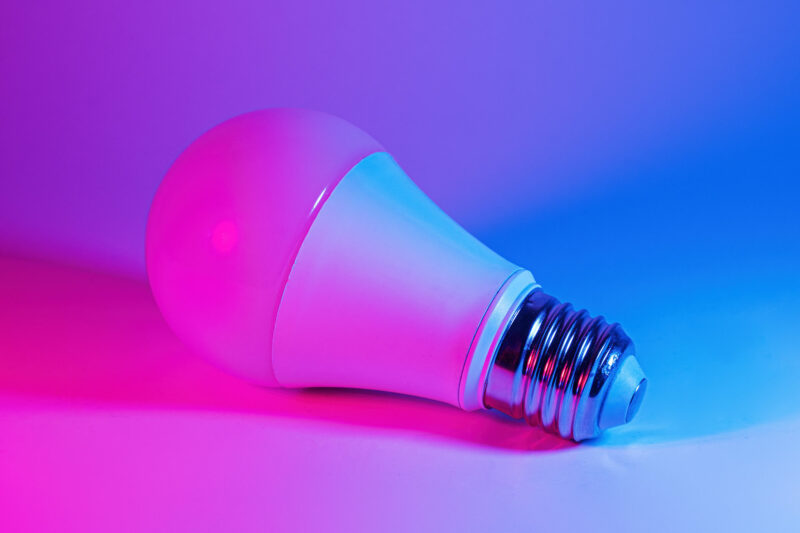
You can connect smart bulbs to smart devices such as your phone or Amazon Alexa via WIFI or Bluetooth. This allows you to control the bulb from a distance with the tap of a button, or even with your voice.
One drawback of these bulbs is their price. They can be quite expensive, and the cost of equipping an entire house with them could lead to a heavy bill.
The Color of Light Bulb
Another thing to consider when choosing the right bulb for you is the color of the light it emits. Some people prefer warmer yellow light, while others feel more comfortable in cooler white light.
The aesthetic characteristics of your bulb’s light depend on two important criteria. The first of these criteria is the bulb’s color rendering index (CRI). This is essentially a measure of how accurately a bulb will reflect the colors of objects into your eyes.
The CRI is measured on a scale from 0 to 100. Bulbs that have a CRI of over 90% are highly accurate. This makes them suitable for rooms in which tasks that require clear color distinctions are undertaken. Most bulbs have a CRI between 80% and 90%.

The second metric to consider when choosing a bulb is its color temperature. This determines the appearance of the light given off by a bulb when you look directly at it. The lower the color temperature of a bulb, the more yellowish the light coming from it will appear.
To give you a frame of reference, bulbs with a color temperature of 2700K are considered warm. On the other hand, a bulb with a 5,000K color temperature gives off pure white light.
The Intensity of Light Bulb
When people are gauging the strength of the light coming from a bulb, they’ve traditionally looked at it in terms of the bulb’s wattage. However, this isn’t the most accurate way to go about it. A more representative approach to measuring a bulb’s light intensity is its number of lumens.
Lumens are a measure of a bulb’s efficiency in producing light, as opposed to how much power it uses. To clarify, two bulbs of the same wattage can produce different light intensities depending on their lumen specifications.
Since the fixtures in your home have a limit to the wattage they can safely handle, you should know how to convert from lumens to watts. Here are some common lumen ratings and their equivalent wattages:
| 1,600 Lumens | 100 Watts |
| 1,100 Lumens | 75 Watts |
| 800 Lumens | 60 Watts |
| 450 Lumens | 40 Watts |
The Shape of Light Bulb
Once you’ve figured out the type of bulb you wish to use and settled on the desired light intensity and color, you need to find these features in a bulb with the correct shape for your fixtures.
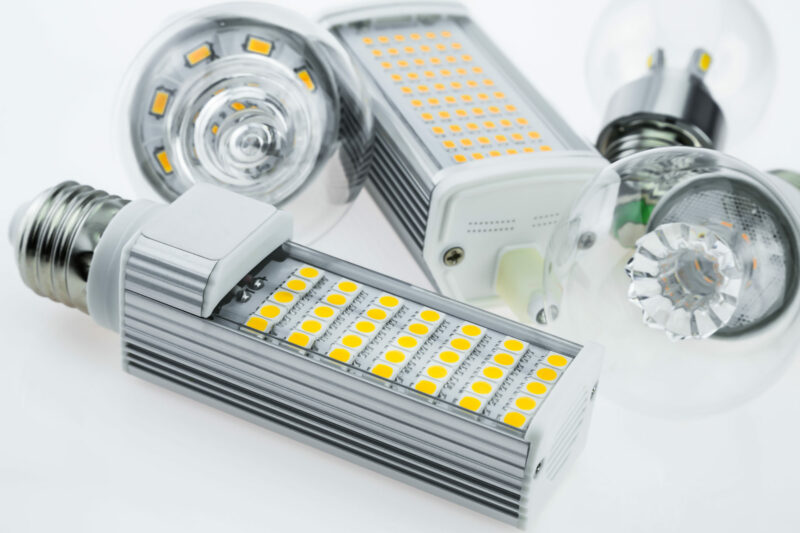
There are three main shapes of light bulbs: spiral, globe, and reflector. When buying light bulbs, you’ll find that each one is labeled with a letter-number-letter code.
The first letter represents the shape, the number is the bulb’s largest diameter, and the other letter indicates the length of the bulb.
The Base of Light Bulb
In a similar fashion to bulb shape, the type of base a bulb has is also an important logistical consideration. You don’t want to buy a bunch of light bulbs only to realize that they don’t have the correct base for the fixtures you have at home.
The most common types of bulb bases are the screw base and pin base. Let’s explore them, as well as some other base types, in more detail:
Screw
If you surveyed all the households across the United States, chances are that a large chunk of them are equipped with Edison screw base light bulbs. True to their names, these bulbs have screw-shaped bases that you twist clockwise to install into a fixture.
A screw base bulb will be labeled with the letter E, followed by a number. The number is the bulb’s diameter in millimeters.
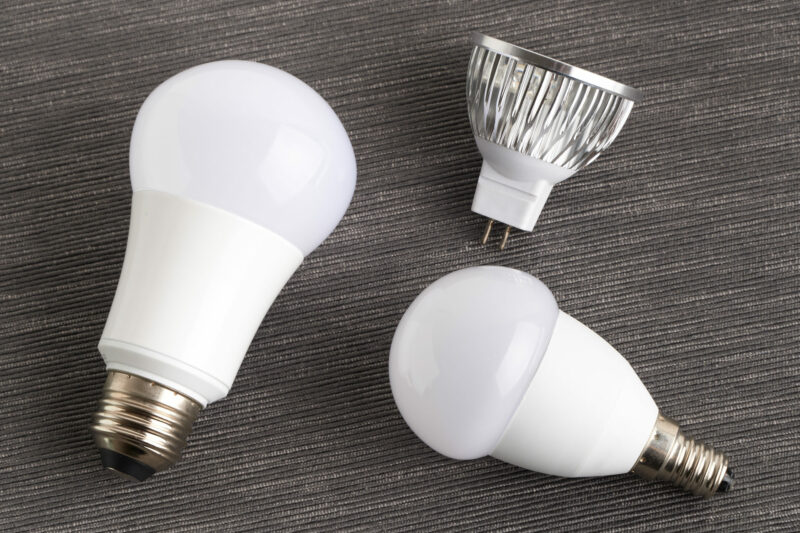
Bi-Pin
Next up we have the bi-pin base. Bulbs with this base type have two pins protruding from them which are pushed into a socket to connect the bulb to your home’s electricity. The bulb types that most commonly have bi-pin bases are LEDs and fluorescents.
Bi-pin base bulbs will have the letter G on them and a number. The number is a measure of the space between the two base pins in millimeters.
Bayonet
In a similar fashion to bi-pin bases, bayonet bases consist of two pins. The difference is that you need to twist a bayonet base bulb in a clockwise direction to fix it in place.
The code used for bayonet bases is BA. This code is accompanied by the bulb’s diameter.
Wedge
Finally, we have the wedge base. This base is commonly used in smaller bulbs. It consists of wedge-shaped wires fixed to the outside of the bulb’s base. These wires make contact with the sides of the fixture or socket to connect the bulb to the electric current.
The designated code for wedge bases is W. Like all other base types, you’ll also find a number specifying the base’s diameter.
Light Bulb Features
You know you’re living in an amazing time when even light bulbs have features! Just a couple of decades ago, a light bulb had one job, to give off light when you flipped on the switch. Nowadays, bulbs can do so much more.
When choosing a light bulb, make sure you’re aware of all the available features and check if the bulb you’re buying is equipped with them. Here are some features to look out for
Dim Control
Some light bulbs give you the option to control their light intensity. This is a great energy-saving feature that doesn’t force you to have your lights either on full-blast or completely off.
You should note that this feature is typically only available in LED and incandescent bulbs.
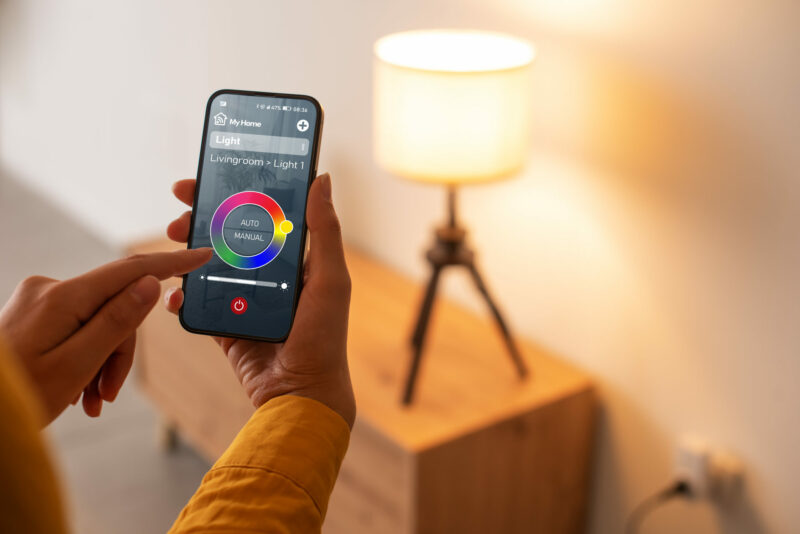
Smart Features
As previously mentioned, you can buy light bulbs that connect to your smartphone via WIFI or Bluetooth.
If you want this level of convenience and control, make sure to buy bulbs that offer these capabilities.
Automatic Lights
If you’re buying light bulbs for your patio or terrace, getting ones with auto-turn on/off features can really come in handy. These bulbs automatically turn on when the sun sets and turn off when the sun rises.
If you’re always forgetting to turn off your outdoor lights, this feature can save you tons of money in electricity bills over the years.
Automatic Sensor Bulbs
If you want to give your home a modern futuristic feel, this feature is definitely one to consider. You can now buy bulbs that have built-in motion sensors.
This allows them to turn on and off automatically when you walk in and out of a room. They can also keep raccoons and other creeping animals away from your house if you install them outdoors.
